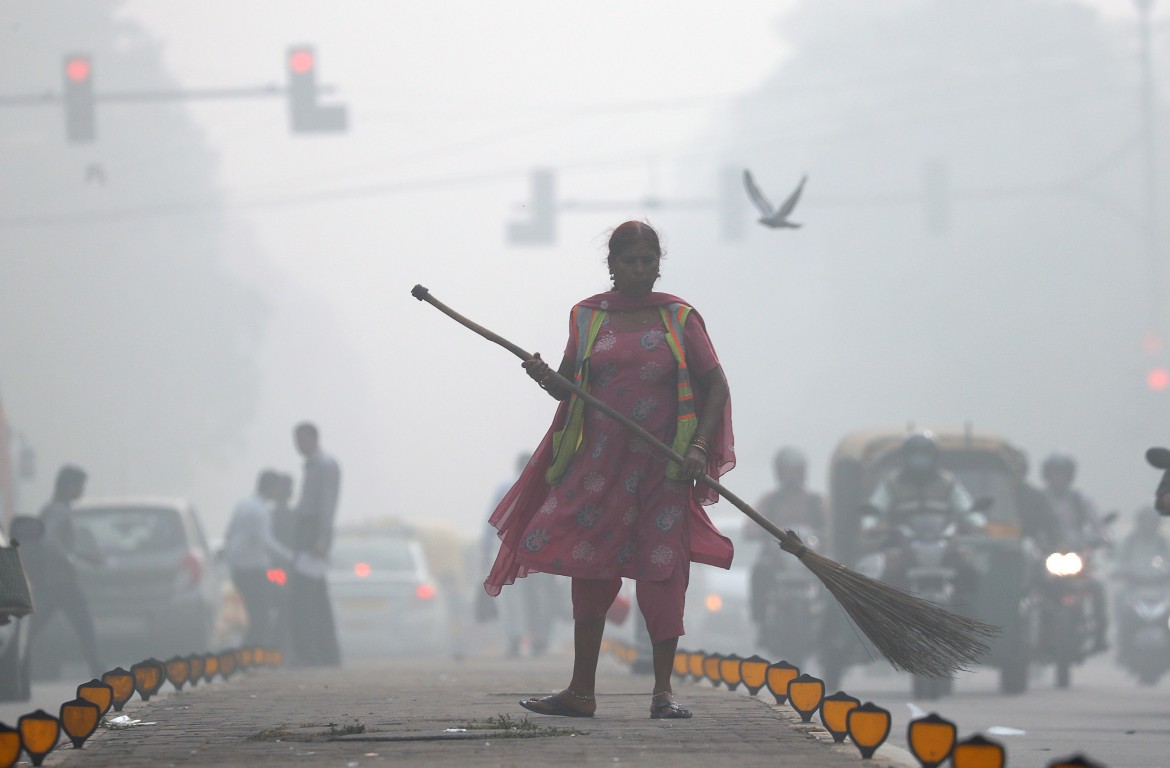Analysis
A toxic pall envelops New Delhi
The Indian capital is facing a pollution emergency, with fine particulate matter in excess of 16 times what the WHO considers safe. The government has closed schools and grounded planes.

The shroud of fog that has enveloped the Indian capital of New Delhi is said to be caused in part by the burning of crops. The practice is particularly widespread in Punjab and Haryana, adding to the usual smog, the lack of wind and the high humidity recorded in recent weeks in what is one of the most populated cities in India and the world. That is what news agencies, observers and experts are all saying — but not without controversy.
In India, sulfur dioxide emissions have increased by 50 percent since 2007 (Scientific Report, 2017). And these days in New Delhi, fine particulate matter (PM 2.5) has reached levels extremely dangerous for the health of the inhabitants. The limits set by the WHO say this should not exceed 25 ppm, whereas the data recorded on the streets of New Delhi gives numbers ranging from 400 to 700 ppm.
The Indian government has closed all schools and kindergartens until Sunday, has limited air and rail traffic, and has encouraged the use of public transport by reducing the price and increasing fares for parking lots.
In addition, Transport Minister Kailash Gahlot announced there would be additional traffic restrictions starting today, alternating based on license plate numbers. Even some foreign airlines have shut down their flights to the city, which is shrouded in a pall of smog and political controversies. The main dispute concerns the origin of the cloud of smog.
The leader of the opposition Aam Aadmi Party (AAP), Sukhpal Khaira, claims that farmers have nothing to do with it and that the fault lies instead with the exhaust from the myriad cars and industrial polluters.
In his view, the fog caused by agricultural fires doesn’t reach the capital at all in many cases, and the farmers are themselves suffering, not from pollution but from stifling debt. But it seems beyond doubt that the major fires in the countryside bear some responsibility. It is at least a contributing factor and not an insignificant one. But can we say that only the activities of farmers in the north of the country are to blame?
According to the newspaper Indian Express, every year, between October and November, 34 million tons of waste from the harvest of rice and wheat are burned. The significant difference, however, is between the crops tended manually and those harvested using machines — the difference, that is, between poor peasants and rich landholdings.
In manual harvesting, due to the use of sickles, the grain is cut close to the ground, and the rest of the plant is reused as fodder or for packaging — a traditional use that is “green” and sustainable. In large-scale agriculture, however, the machines leave a larger part of the plant, approximately 40-50 cm, which is then burned as a matter of course.
This is a recurring situation, typical of more than just the Indian subcontinent: in the ‘90s, the palm plantations in Southeast Asia were already under scrutiny for the fog of pollution that reached all the way from Indonesia to Singapore.
According to the World Health Organization, 13 of the 20 most polluted cities in the world are in India, and every year 627,000 people die from health problems related to air toxicity: chronic bronchitis, cardiovascular disease and lung cancer. The risks concern most of all the respiratory function in children, compromised in one out of three cases.
In 2010, India challenged the data reported by the WHO, claiming it had been manipulated and denying the study’s conclusions. The difficulty in finding effective remedies against pollution, combined with the little care given to green areas, strong industrialization and reckless overbuilding, have led to a deterioration of the condition of the environment in India.
Currently, the government is trying everything, such as firing water cannons into the air, a palliative that probably will not be very useful. The water cannons would have to shoot water from an elevated position (100 meters high) in the attempt to bring the dust particles down to the ground. But it’s not clear where this could be done in this sprawling city of 22 million inhabitants, where the percentage of people per square kilometer is among the highest in the world (second only to the center of Manila or Dhaka).
In the meantime, South Korea has also offered to help out, but the solution can only be a long-term one — say the experts in Seoul — with a more “holistic” approach to urban management. This is an embarrassment for the government of Narendra Modi, the Delhi strongman known for his arrogant hyper-nationalism, in line with his party’s ideology. Modi does not want to make enemies of city dwellers, nor of big business, nor of farmers.
Originally published at https://ilmanifesto.it/la-cappa-tossica-che-avvolge-new-delhi/ on 2017-11-12
